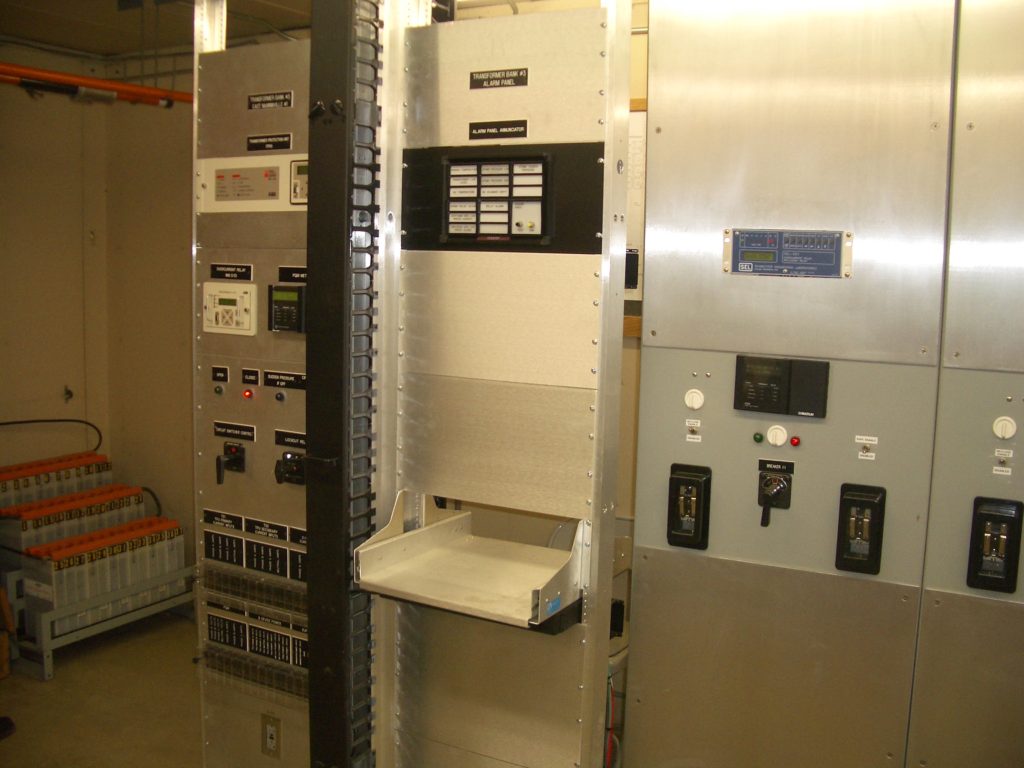By Guy Colpron, P.E., Director of Design

The introduction of microprocessor-based protective relaying in the 1990s has changed the power industry. Electrical networks are now more secure and reliable than ever before. Over the years, manufactures have continued to improve functionality while making the equipment more cost effective.
Microprocessors Enable Increased Relay Functionality
Microprocessor based protection has come a long way. The number of protective functions within a protective relay has increased dramatically. Typically, you will find several protective elements built into the device. These may include differential protection, phase overcurrent, negative sequence overcurrent, ground overcurrent and neutral overcurrent protective elements. Overcurrent elements can be programmed with definite time, time overcurrent and instantaneous time characteristics, all having the ability to be torque controlled. Protective relays can also be ordered with voltage protection elements. This allows for a wide range of protection and control options as well as monitoring features allowing the utility to assess the health of their power system.
Capabilities of Microprocessor-Based Protective Relays
The capabilities of microprocessor-based protective relays are defined and limited by their connection to the power system and the control scheme of the power system equipment it is protecting. The following is a list of capabilities of these improved protective relays:

- Functionality: Can be ordered with contact inputs and
outputs, current and voltage inputs, mA current loops and communications ports
with several different communications protocols to communicate to the outside world.
This coupled with programmability of the of the outputs, allows for a wide
range of control options.
- Selectivity: Functions come with a wide range of
protection pickup settings allowing the relay sensitivity to meet the user’s
needs.
- Metering: Comes with several metering features,
including: demand meter, instantaneous metering and average metering for each
voltage and current.
- Displays: Typically come with a display on the front of
the device which can be programmed to show equipment ID, metering values,
breaker status, instantaneous current and voltages as well as any intermediate
logic, including system information.
- Event Reports: Reports allow tripping operations to be
reviewed to determine if the relay was set properly and if the control scheme
performed as desired. These reports allow Operations Groups to review currents
and voltages of faults thus providing refinement of their system electrical
models.
- SERs (Sequence of Event
Reports): SER reports allow users to
precisely evaluate the timing of power system equipment and control scheme
equipment. As an example, a breaker having a rated opening time of 3 cycles may
need maintenance if the breaker opening is recorded at 5 cycles.
- SCADA (Supervisory Control and
Data Acquisition) system connectivity:
Many protective devices can now communicate with small SCADA system
devices allowing small utilities the visibility of their power system from
their office. This provides quicker response times to outages and can help the
Operations Groups to identify problems before they cause an outage.
- Maintenance: Microprocessor based protection systems require less frequent testing than the older electromechanical relays of the past. Microprocessor based protection monitors its own health and can alert Operations Groups of protective relay problems.
Microprocessor-Based Protective Relay Benefits for Utilities
To benefit from these improved microprocessor-based protective relaying capabilities, utilities should be aware of the benefits that these devices can provide. Utilities may want to evaluate the following to determine what is the best fit for their respective systems:
- Understanding the device
capability: This allows the utility to make decisions on
the best design of the control system to meet the desired financial and
operational goals.
- Computer based
programming: Programming protective relays can be
challenging. Manufacture’s provide a
wealth of instruction to Operations Groups who wish to program their own
devices. In addition, some manufactures will program the device for utilities,
or the utility may choose the service of an engineering consultant.
- Computer based integration
and data collection: Collecting relay data can provide a wealth of
information about the utilities power system. There are many ways to accomplish
this, from direct connection by a technician to an automated data collection
system.
- Understanding the data: Data analysis can provide a good understanding of a power system and provide insight into system upgrades and modifications.
Considerations for the Cost
As with all systems, the cost is always an issue and finding the right balance for your utility can be challenging. Looking down the road the utility must decide the right balance of protection, monitoring, metering and control to prepare for the future. Making decisions for the future with limited information can make planning a difficult task.
The power system protective relaying world has grown by leaps and bounds offering utilities unprecedented protection options, equipment control possibilities, fault event information, sequence of event information and loading information. All this information can be communicated to a central office for managers and engineers to evaluate the system performance allowing managers to plan for the future.
We encourage you to do your due diligence on the front end to build for the future. If you are unsure as to how to approach this investment in your system, it is good to seek outside advice. Please consider BKI a resource to help ensure your system can perform to its potential.

